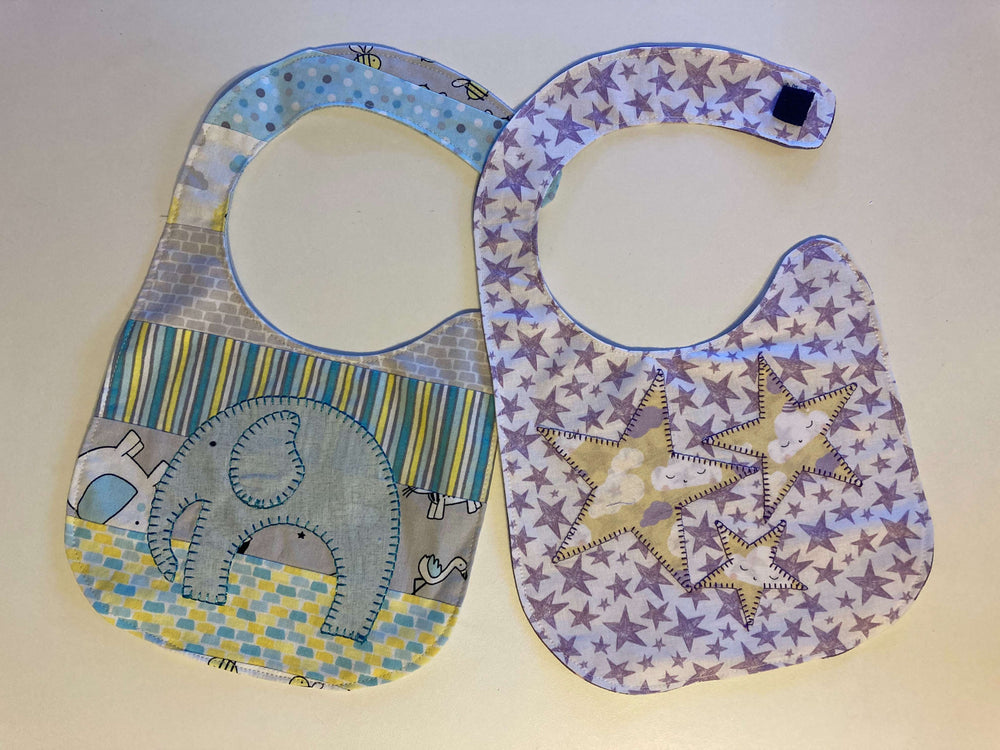The other option is to add snaps instead of Velcro. The Velcro was very easy to sew on-make sure you don’t get the sticky backed kind, it will cause your needle to dull and sticky and give you nothing but trouble.

February 16, 2024
AccuQuilt Cutting - The Bib Die
February 16, 2024
AccuQuilt Cutting - The Bib Die

Here's What You'll Need:
Accuquilt cutter (GO! Big #55500 or GO! #55700)
Bib Die (#55864) and mat
Star Die (#55028) and mat
1/4 yard main fabric
1/4 yard back fabric
1/8 yard or fat quarter for Stars
Steam a Seam for Star appliques and piece of stabilizer
Small piece of velco
Sewing machine that has an applique stitch, with fresh Microtex 80/12 needle
Cotton or polyester thread
Applique foot
Iron, ironing board and Mary Ellen’s Best Press



Cut the Steam a Seam to the size of your desired applique.
Lightly press the back of your applique fabric, removing the paper to expose the sticky side.
The GO! Cutting system will allow you to cut 6 layers at a time.
Run the Star die with the appropriate size mat through the cutter. Set your Stars aside.

Prepare the front and back of your fabric. Using your Best Press, spray the fabric and iron. You will need roughly a 9”x14” piece of fabric for the main and back of your fabric. With right sides together, lay the fabric on the die covering the light grey outline of the bib. Run the die through your cutter.


Accuquilt also offers embroidery files for some of their applique dies. Definitely check that out on their website for an easier, in the hoop applique option. If your applique stitching starts to pucker or tunnel, place another piece of stabilizer under your main piece of fabric where the applique is. After you are done stitching, tear away the stabilizer as much as possible.




Sew the Velcro in the appropriate places:
One on the top of the main fabric near the neck wrap around,
and the other one on the backing fabric where it would lay on the baby’s shoulder or collarbone.


The possibilities are endless with all the applique options! I pieced 2 ½” strips together to create the background for the elephant bib. Sew cute!




Shop AccuQuilt
The number one thing quilters all want is more time and using a fabric cutter is up to 90% faster than rotary cutting.









